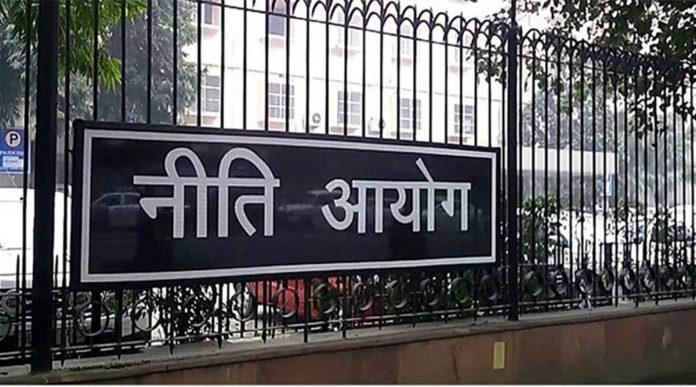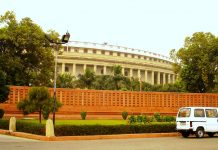This article is written by Prina Sharma, pursuing B.A. LL.B. from Amity University, Kolkata, West Bengal. The article deals with Consumer Unity and Trust Society’s study of the economic impact of judicial decisions.
Introduction
The NITI Aayog has commissioned a study to Consumer Unity and Trust Society (CUTS) International, which is a Jaipur – headquartered research organisation, to examine the economic impact of various judgments delivered by the Supreme Court, the High Courts, the National Green Tribunals (quasi-judicial bodies) and the judicial activism of such courts and tribunals.
The objective of the study is to establish a narrative building to make the judiciary aware of the economic impact of their decisions. Such documents of descriptive structures, on being formed, after coming to conclusions, will be used as a training input for judges of commercial courts along with the Supreme Court, High Courts, and National Green Tribunals as per their respective documents.
Table of Contents
Aim of the study
Initially, the study was supposed to commence from February 2020 and was expected to be concluded by the end of February 2021, but unfortunately, the project got delayed due to the nationwide lockdown to prevent the spread of Covid-19. CUTS International had approached the government think tank, the NITI Aayog with a plea to extend the timelines. The total cost which initially was Rs. 24.8 lakh, is estimated to go higher this time around.
The focus of the study is to do an objective cost-benefit analysis that deals with the economic impact of the decisions, a source said. The study would observe and make a note of the various kinds of stakeholders that might have had an economic impact by their decisions, and try to frame a dispassionate picture of how the decision has impacted. The study is also a part of a larger comprehensive project which is undertaken by the NITI Aayog and it aims to establish a judicial performance index, which would evaluate the performance of judges at district courts and courts at the subordinate level, according to senior government officials.
CUTS International was asked to examine the economic impact of several different decisions held by the SC and the NGT, as a part of the new study, which has either delayed or postponed or completely stopped projects in several parts of the country.
The primary study is on the economic impact that resulted from the ban that was imposed by the Supreme Court in March 2019 on the construction of a Greenfield airport at Mopa, in Goa. The Apex court had suspended an economic clearance granted to the airport and then had asked the Expert Appraisal Committee to revisit its decision. Although the ban on construction was revoked by an order of the Supreme Court in January 2020, it had several revised conditions.
Judgments under evaluation
CUTS International decided to carry out their study by evaluating five cases that may have put an economic impact that includes the SC’s February 2018 ban on iron ore mining in Goa, SC’s ban on the construction of a Greenfield airport at Mopa, in Goa, the decision of the SC to reject the opening of the Vedanta’s Sterlite copper plant, which has been shut down since April 2018, the NGT ban on sand mining in the Yamuna river in Gautam Buddha Nagar in 2013, and NGT’s ban on construction activities in Delhi-NCR.
The research agency based in Jaipur has started researching with the 2013 NGT judgment, which decided to ban sand mining in the Yamuna river bed in Gautam Buddha Nagar. Although the decision held by NGT aimed to address illegal sand mining, the decision may have had an unpleasant influence on the mining leaseholder with relevant approvals, henceforth causing harsh and unavoidable losses to the sand mining industry, along with leaseholders and truck owners.
CUTS International had approached the non-government organisation, SAFE (Social Action for Forest and Environment), which is situated in Gautam Buddha Nagar, to study the situation in-depth and to gain ground data, and seek their views on the issue.
CUTS International had also conducted an assessment study on the economic impact as a result of the Apex Court’s decision to impose a ban on the presence of liquor shops within 500 m of any highway.
Judicial activism
Over time, various issues such as environment, social, property rights, educational institutions, etc. have been presented before the court to prescribe public policy outcomes. This widening of subject matter, in due course of time, has caused Indian judicial activism to be acknowledged as a mechanism that engineers social change. Earlier, only the rights of the ‘socially excluded’ were taken up for judicial review and intervention, but the world is never spatially or temporally static and it is essential for constructing and reconstructing solutions for the issues that emerge with time.
The impact of judicial intervention has dual outcomes. First, the court has been successful in being able to reinterpret and bring changes in the rights of the people by way of active intervention along with adjudication. Second, the court has been able to achieve similar results by declining to interfere in policy decisions. In a democratic country, judicial review is based on the concept that it is a counter-majoritarian check on the overindulgences and excesses committed by the other two branches of government and that it protects the rights of the people. Therefore, in a system of checks and balances, the significance of judicial review has been best interpreted by analysing its ability to invalidate executive and legislative actions, on these two grounds. In India, this holds special importance, since the power of judicial review has been precisely granted by the Constitution. The aspects based on which judges may exercise limited judicial review in matters that deal with policy adjudication can be widely categorised as procedural limitations, substantive limitations, and institutional limitations. These limitations restrain the scope of judicial review and the court has used it as a tool to justify judicial restraint. It is also often debated that policymaking contains complex issues, which require the need of expert knowledge on the subject, whereas judges are usually the experts of only law in particular. There are several important cases where the Indian judiciary has imposed socio-economic rights by formulating them with fundamental rights guaranteed under Article 21 of the Constitution. The Supreme Court has seldom established the importance of judicial review in India in the judgments of various cases.
Study brief posted by the Consumer Unity and Trust Society
CUTS had posted a study brief that observed that judicial decisions have extensive economic impacts which are often not taken into consideration during the time of decision-making. Some of the recent judgments and orders of the Supreme Court, along with the National Green Tribunal (NGT), can be found to indicate that the economic impact analysis of judicial decisions is yet to achieve broader acceptance.
Taking account of judicial activism, the study brief stated that the absence of ex-ante analysis of the economic costs accompanied with a decision is further exacerbated when judicial activism by courts and tribunals is also at play.
Furthermore, the brief noted that there is a need to assess the economic impacts of judicial decisions by way of a ‘structured and systematic process’, which would consent to a discourse to broaden the considerations of the courts while taking decisions.
The brief observed that it is required by the judiciary to take environment, equity, and economic considerations into account while deciding cases, and is required to institutionalise a mechanism for it. Among other things, there is also an equal need to construct a public discourse among important policymakers, members of the judiciary, and academia for promoting a sensible and responsible approach by the judiciary while deciding cases.
However, the NITI Aayog elucidated to CUTS that the aim of the study is not to imply ‘judicial activism’, as was stated in the brief. An official observed on condition of anonymity that the NITI Aayog told CUTS that the study is an objective analysis and it is cost-benefit, which aims to comprehensively examine the economic impact, if any, of these judgments.
The necessity of the study
In the study brief, CUTS took account of a 2017 Supreme Court judgment by Justice A.M. Sapre and Justice A.K. Sikri, who is now retired, in which the Apex Court mentioned that the Indian judiciary must contemplate and take into consideration the impact of its judgments on the economy, jobs, environment, etc.
The judgment had observed that the court must avoid the particular outcome which holds the potential to create an adverse effect on the development of infrastructure of the economy, employment, or the revenue of the state.
Senior lawyer Harish Salve, in 2019, said that he directly blamed the Supreme Court of India for certain problems that were ailing the economy. It was further reported that several judgments of the Supreme Court, which include the cancellation of the 2G spectrum licences, coal block allotments, mining leases in Goa, and the court’s foray into policy-making through orders that include the highway liquor ban, validates his claim.
Former steel secretary Aruna Sharma said to ThePrint that the study is extremely necessary. She stated that in the Supreme Court, two different parties seldom discuss the legalities of an issue and the economic impact is time and again factored in.
Taking account of one of the cases being studied that deals with the termination of iron ore mining in Goa, Sharma observed that all iron ore mining, in 2018, was stopped in Goa because of this particular judgment. She noted that this took place in a state where one out of five people is associated with iron ore mining, either directly or indirectly. This situation not only resulted in Goa becoming a state with one of the highest per capita incomes to one of the lowest but also left the state government borrowing.
Sharma further noted that it is nobody’s case that the Apex Court is to be accused of such cases, but we must own a mechanism wherein in such cases, the socio-economic impact of the case can be presented in front of the Court before it makes a judgment.
Possible solutions for the Indian judiciary to be more economically responsible
There have been many instances wherein the courts have been successful in making judgments that hold a fine balance between economy, environment, judicial considerations, etc., like in the case where the intervention of the Supreme Court resulted in the adoption of CNG and consequent economic benefits and in the case where the Apex Court had directed that overhead power transmissions lines situated in Rajasthan must be laid underground to shore up the plummeting numbers of the Great Indian Bustard.
Training judges on basic economic principles is a good but medium-term approach; a more urgent and practical strategy could be institutionalising the mechanism of expert committees that can guide judges in considering a wide range of perspectives and collecting required evidence. The lack of institutional mechanisms has often been the primary cause for the Supreme Court to avoid taking up matters that can have severe consequences on the Indian economy.
The Apex Court, in May 2017, had itself noted that it is necessary for adopting an interdisciplinary mechanism, in a regulatory dispute between 2 sugar factories, namely Shivashakti Sugars Limited and Shree Renuka Sugar Limited (Shivashakti Sugars Limited v. Shree Renuka Sugar Limited & Ors. 2017.)
It is necessary for the court to first construct their decision on a firm legal and constitutional basis, and then follow it up with an economic rationale that may be provided by the court as an additional support ground.
As it has been done on several occasions, the courts shall appoint an expert committee in most cases, to examine and study issues in-depth and investigate their enforceability and then take action. Given the fact that the judiciary is funded by public money, the public shall be allowed to review the quality of orders given by the court.
- Every order passed by the judiciary is likely to have an economic impact, whether big or small. Many may argue that study of the economic impact of a court’s order is not the responsibility of that court and thus is beyond the remit of the judiciary. However, if the scope of judicial analysis is narrowed down only to environmental or equity considerations, such an attempt would be futile and would not meet the desired effect.
Conclusion
There are many instances where the judgment of the judiciary has resulted in preventable economic harm and failure to provide proper and complete justice to the people who are affected. With the support of NITI Aayog and various other governmental and non-governmental organisations, we can engage in several studies of judicial orders with the complete overview of looking at their costs and benefits instead of evaluating the validity of the orders themselves.
The purpose of such a study is simple. It is to make sure whether the orders passed by the judiciary met the concerned objectives or not and to take into account the impact faced by different stakeholders apart from the parties directly concerned, and to come up with an efficient alternative solution or mechanism to help the judiciary consider the perspectives of various stakeholders before giving an order.
References
Students of Lawsikho courses regularly produce writing assignments and work on practical exercises as a part of their coursework and develop themselves in real-life practical skills.
LawSikho has created a telegram group for exchanging legal knowledge, referrals, and various opportunities. You can click on this link and join:
 Serato DJ Crack 2025Serato DJ PRO Crack
Serato DJ Crack 2025Serato DJ PRO Crack









 Allow notifications
Allow notifications



